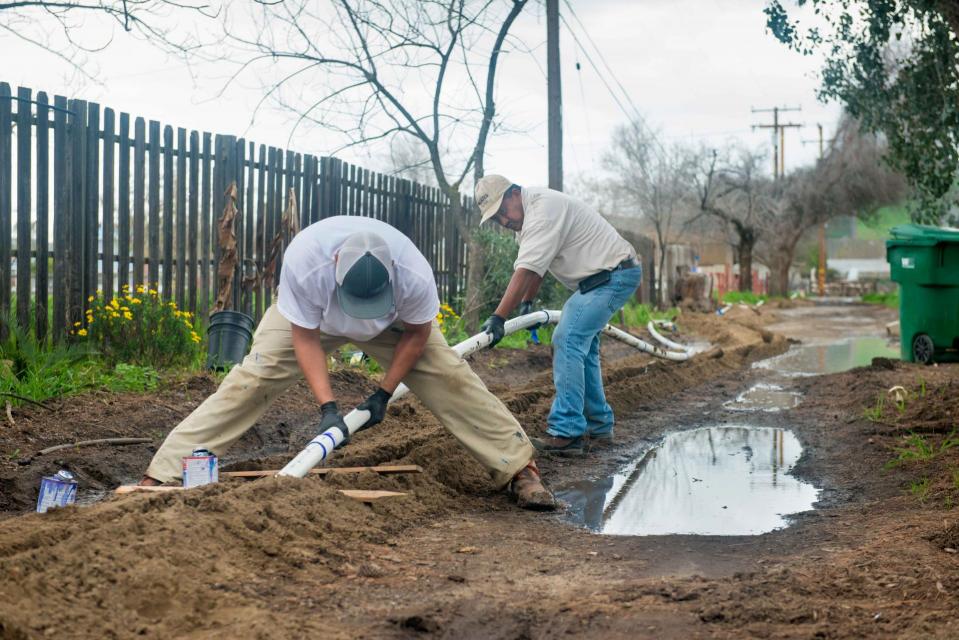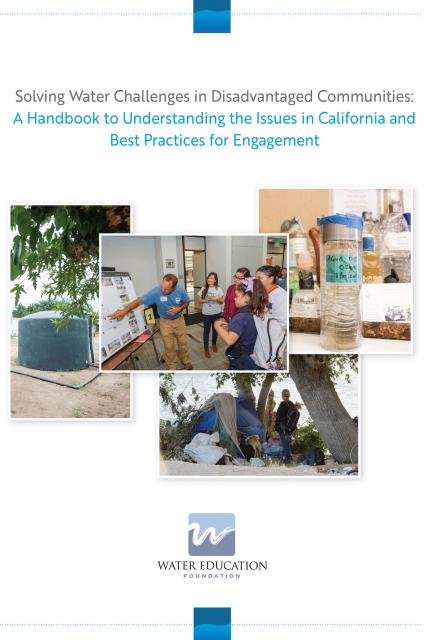Disadvantaged Communities
Disadvantaged communities are those carrying the greatest economic, health and environmental burdens. They include poverty, high unemployment, higher risk of asthma and heart disease, and often limited access to clean, affordable drinking water.
An estimated 1 million Californians are served by water systems with unsafe drinking water, according to the State Water Resources Control Board. In many of these communities, people often buy bottled or filtered water to avoid drinking contaminated tap water. They are subject to lost water supplies from wells running dry, especially during a drought when groundwater is relied on more heavily and the water table drops.
While disadvantaged communities are spread across California, they are concentrated in the San Joaquin Valley.
During the 2012-2016 drought, the Tulare County community of East Porterville was especially affected by a lack of water. The community of about 7,500 people, many of whom are low-income Latinos, relied on groundwater from private wells.
The California Department of Water Resources defines a disadvantaged community as one with an annual median household income of less than 80 percent of the statewide figure, which was $85,300 in 2022.
As many as 300 wells went dry during the summer of 2014 and other area wells have nitrate contamination. By early 2018, a partnership of state and local agencies had connected 755 homes in the community to the city of Porterville’s municipal water system.
The state’s 2023 Drinking Water Needs Assessment estimates that 100,000 residential wells are at risk of water shortage, noting that the figure is “very likely to be a significant underestimate, as it is based only on known domestic well locations.”
The plight of disadvantaged communities and their struggle for clean water is the subject of ongoing efforts to help remedy the problem.
In 2012, Gov. Jerry Brown signed the Human Right to Water law, making California the first state in the nation to recognize that every person has a right to safe, affordable and accessible water for drinking, cooking and sanitation.
With the passage of Proposition 1 in 2014, Integrated Regional Water Management plans now include efforts to engage disadvantaged communities more effectively in assessing their water, wastewater and flood control needs.
California’s Safe and Affordable Drinking Water Fund, enacted in 2019, provides about $130 million each year until 2030 to support safe drinking water projects in vulnerable communities. Meanwhile, there is an effort to figure out how to provide low-income water rate assistance for all Californians.
The 2023 update of the California Water Plan enumerates many new state actions since 2018 — legislation, executive orders, and financial and technical help — that aim to better protect vulnerable communities from the worsening effects of droughts, floods and wildfires brought by climate change.










